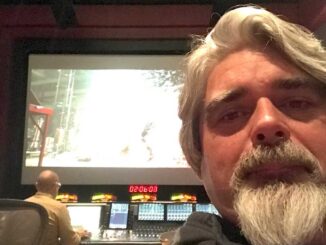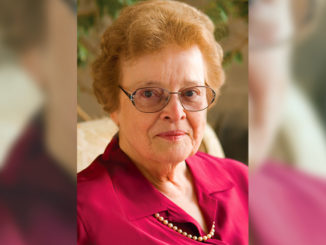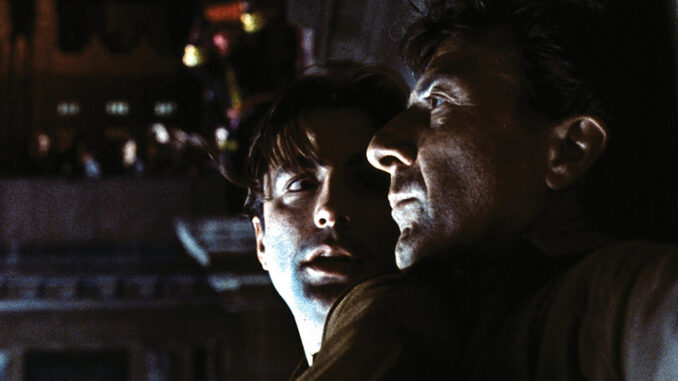
Columbia Pictures/Photofest
by Peter Tonguette
We all want to be
the hero of our
own story.

Such a wish is at the center of director Stephen Frears’ 1992 film Hero. Written by David Webb Peoples — from a story by Laura Ziskin (also the film’s producer), Alvin Sargent and Peoples — the comedy revolves around small-time pickpocket Bernie LaPlante (Dustin Hoffman). As the film opens, Bernie is in court facing charges for his minor-league mischief, but he cannot resist pilfering cash from his court-appointed attorney.
Perpetually unshaven and prone to speaking in a garbled murmur, Bernie is far from anyone’s picture of a hero. Then, on a foul-weathered evening, a passenger jet tumbles from the sky while Bernie is driving by. Half-heartedly, he enters the burning airplane and helps a succession of injured passengers off — while also helping himself to the purse of one notable passenger, newswoman Gayle Gayley (Geena Davis). At first, Bernie seeks no credit for his gallantry. Instead, homeless John Bubber (Andy Garcia), who offered a ride to Bernie, proclaims himself the so-called “Angel of Flight 104” in an attempt to collect a $1 million reward. Comic chaos ensues when Bernie tries to establish himself as the true hero.
Featuring an energetic cast (also including Tom Arnold, Kevin J. O’Connor and an unbilled Chevy Chase), the Columbia Pictures release scores points against both media sensationalism and public gullibility.
As it happens, Hero had its own hero of sorts. In 1990, Columbia Pictures story analyst David Bruskin was assigned to create project coverage on the screenplay. Having been developed by Ziskin and penned by Peoples, the project came with an impressive pedigree, but Bruskin sensed that something was lacking.
“When the next draft came in, I realized, ‘You know, there’s something here that’s not working,’” Bruskin remembers. “And the writing was so good that I found it hard to think what it could be. How come it just wasn’t feeling right?”
In his attempt to answer that question, Bruskin’s coverage suggested changes to the screenplay that Ziskin said influenced the final direction of the film. His part in the evolution of the project also led to his temporary transition from story analyst to Director of Development at Laura Ziskin Productions.
“When the next draft came in, I realized, ‘You know, there’s something here that’s not working,’” Bruskin remembers.
A native of Philadelphia, Bruskin was first introduced to story analysis in 1984 in a semester-long class taken while pursuing a Master of Arts degree at the University of Southern California’s School of Cinema-Television. Then, in 1987, as Bruskin pursued his Master of Fine Arts degree at USC, screenwriting instructor Jim Boyle connected him to the story department at Warner Bros. (where Boyle himself was employed as a story analyst). “At the time, Warner Bros. was just beginning to transfer its decades-old paper story library onto computer,” Bruskin recalls. “The story editor, Kimberly Brent, asked me to do a project for which I would interview everybody in the department, find out what they did and then compile a sort of operations manual with a flow chart.”
After his graduation, Brent contacted Bruskin with a job offer. “She called me back months later and said, ‘Warner Bros. has just acquired Lorimar, and we have to go through the entire library of material they have — and all of the union story analysts are working, so this is a very rare chance for me to hire off-roster,’” Bruskin remembers. “So in March 1989, I started reading for Warner Bros., and that was the beginning of my career.”
As a story analyst, Bruskin was tasked with delivering written coverage on a given screenplay within about four hours of receiving it. A top sheet included grades on concept, plot, characters and other categories, using scores of excellent, good, fair and poor. “I wrote a synopsis and comments with a recommendation as to whether they should consider buying it or not,” Bruskin reflects. “When I first started, I wasn’t reading important stuff because they didn’t know yet if they could trust my taste in material.”
As a story analyst, Bruskin was tasked with delivering written coverage on a given screenplay within about four hours of receiving it.
In November 1989, Bruskin left Warner Bros. and in early 1990, joined the story department at Columbia. Within the year, the Columbia story department relocated from The Burbank Studios to the old MGM lot in Culver City. “The reason that’s important is because some story analysts did not want to drive all the way to Culver City,” Bruskin reflects. “I happened to live in Palms, which is literally two minutes from Culver City. So, some of the senior people did not go, and as a result of that, I got to rise up a little bit in the hierarchy.”
Bruskin began receiving more consistently high-quality material, including Hero. As a co-writer of Blade Runner (1982), Peoples was already widely acclaimed, while Ziskin and Oscar-winning screenwriter Sargent had just collaborated on what would become the hit comedy What About Bob? (1991). Hero had much going for it on paper, and Bruskin was taken with the project as a whole.
“In addition to all the issues that it entertainingly presents about the media and journalism, it also deals with what real heroism is,” he comments. “It was incredibly rich and was done in such an easy-to-swallow package.”
Still, on reading the next draft, Bruskin was vaguely dissatisfied.
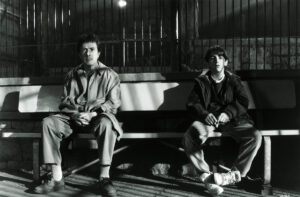
Columbia Pictures/Photofest
“By this point, I had come up with a diagnostic system for when I was on the fence about a piece of material,” Bruskin recalls. “I’d start at the end of the screenplay and run down a list of questions in a particular order to see if my answers provided a hint as to what was bothering me.”
He ultimately concluded that Hoffman’s character lacked a well-defined goal and need. “In the paradigm of a movie’s dramatic structure, you have a protagonist with a goal that he actively pursues and a subconscious need that he should resolve if his character is to grow by the end of the story,” Bruskin observes. “Then you have an antagonist, who is not always a villain but a force of change.”
In the case of Hero, these elements were muddied. “What is Bernie’s goal? He starts with a negative goal — a little harder to do in drama — which is to stay out of jail after he’s been convicted of yet another petty crime,” Bruskin says. “Bernie’s appeal to the judge is that his young son needs a dad — Bernie is divorced from the boy’s mother [Joan Cusack] — but we suspect he may be using his son just as an excuse to stay out of jail.
“Bubber has nothing to do with jail or the boy, but his existence as the faux hero keeps challenging Bernie,” Bruskin continues. “This makes Bubber the antagonist, even though the two characters — except for one earlier scene — don’t interact until the climax, which was another concern; protagonist and antagonist traditionally face off repeatedly during a film.”
Bruskin points to Back to the Future (1985) as an example of a successful film in which the first act (usually unfolding over the first 30 minutes) sets up the balance of the story, but the transition was too long delayed in Hero.
Exacerbating these problems was another: Fifty minutes into the nearly two-hour film, Bernie supplants his original stay-out-of-jail goal with another. “Once Bubber comes on the scene, and Bernie learns there is money to be made, Bernie’s new goal is to get recognized to try to get the money,” Bruskin explains. “Changing the protagonist’s goal halfway through might work in a different story, but it doesn’t here. Suddenly, the first half of the movie retroactively becomes a set-up for the second half.”
Bruskin points to Back to the Future (1985) as an example of a successful film in which the first act (usually unfolding over the first 30 minutes) sets up the balance of the story, but the transition was too long delayed in Hero. “By essentially turning the movie’s first hour into an overly long first act, you’ve taken audiences halfway to their destination, only to tell them midway they’ll be going somewhere else.”
Bruskin wrote his coverage of the screenplay. “Projects that are submissions the studio bought and put into development automatically go on the ‘weekend read’ for studio executives,” Bruskin says, “so the latest draft of Hero went with my coverage.”
The following Monday, Bruskin learned that Columbia chairman Frank Price, who read all the coverage, had praised the Hero coverage, saying that it had finally identified what had been bothering him about the story. Price was perhaps unusually attuned to the importance of story analysts, having worked as one for Columbia in the 1950s. “I read for all the studios at one time or another,” Bruskin says, “but he was the only studio head who ever wanted to meet each of the story analysts after he got the job.”
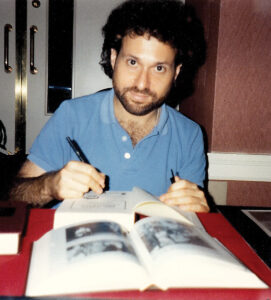
Bruskin subsequently became “the flavor of the month.” Not long after the weekend read, he received a call from Ziskin. “She said, ‘I read your coverage. I thought it was really good and smart, and I’d like to meet you,’” Bruskin remembers. “It was like the call from God to come up to heaven or something.” In fact, Ziskin’s office was in the Irving Thalberg Building on the Columbia lot, but what she said was nonetheless career-altering for Bruskin: The creative producer wanted the story analyst to work for her. He agreed, though he would not begin the job for several months.
In the meantime, Hero had been greenlit, and rewrites continued. “As drafts would come in, she would read my studio coverage for each draft and we would discuss it,” Bruskin says. “Later, she would mention on occasion that my work had influenced the way the film went, though I never really saw that.” In September of 1991, Bruskin joined Laura Ziskin Productions, and in his new job, he visited the set of Hero and observed the film’s progress.
Hovering over the production, however, were the problems with the screenplay previously identified by Bruskin. “David [Peoples] himself told me he couldn’t quite figure out how to fix it,” Bruskin says. “It was never completely resolved.” Hero opened October 2, 1992, to a decidedly mixed response: Several respected critics, such as Hal Hinson of The Washington Post, saw merit in the film, but many others shrugged their shoulders. Audiences were underwhelmed; the film grossed a little less than $20 million at the box office, according to the website Box Office Mojo.
Nonetheless, Hero remains a creative, even ingenious effort — albeit not a model of screenplay structure. “If you think about what the movie is, and all the stuff going on, you can see that the complexity of it sort of trips it up,” Bruskin remarks.
Bruskin’s tenure with Laura Ziskin Productions came to an end on the heels of the film’s failure. “After the movie tanked on the first weekend, there was a chill over my little office,” says the former Director of Development, who also had not fully understood his role. “What she wanted was somebody who could come up with new projects that she could sell to the studio,” he says. “I had one or two projects in mind, but because there were two more senior execs at the company who brought in material, I thought I was primarily a glorified exclusive reader.”
In December 1992, Bruskin left the position and later the next year returned to story analysis, ultimately working at a succession of studios (including Paramount, MGM, Universal and Fox) before retiring. Although Hero represented a detour in his long and successful career in the field, it was a fascinating detour. And the story analyst remains proud of being part of a stellar creative team that almost solved the challenges of a unique screenplay. “We tried to come up with that definitive solution, but never really did.”




